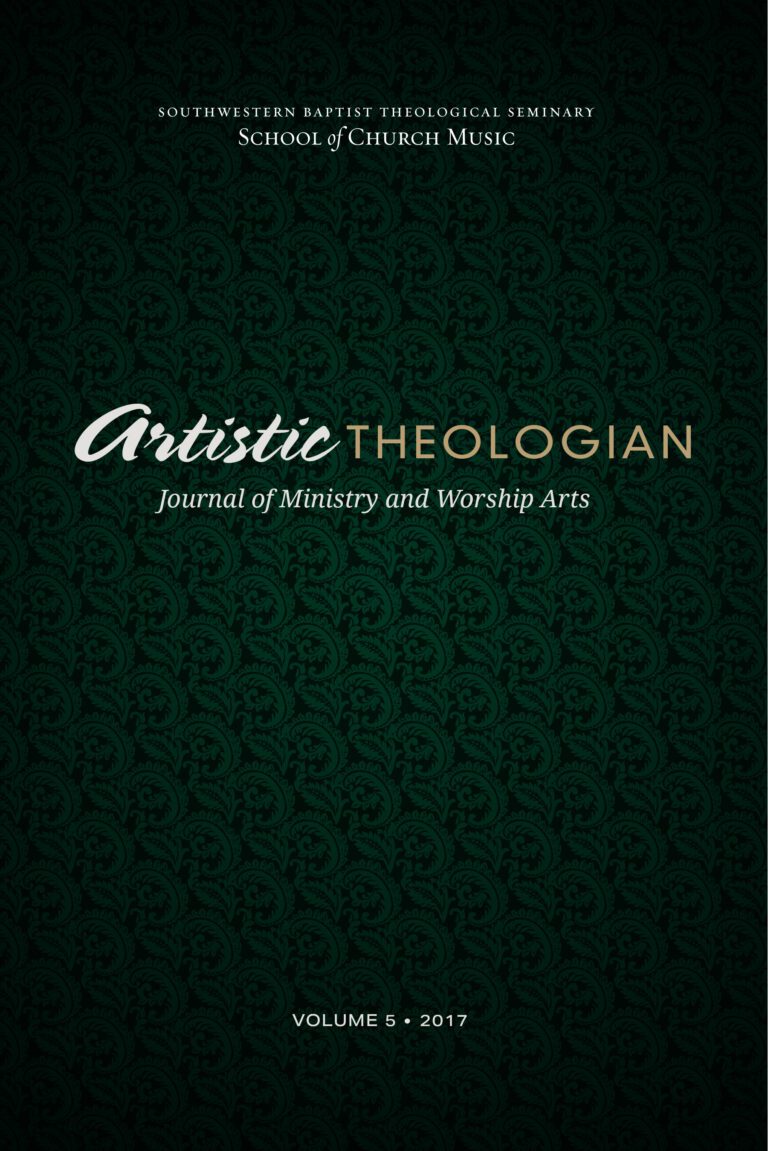
Forming Disciples through Corporate Worship
Artistic Theologian
Volume 5, Summer 2017
Editor-in-Chief: Scott Aniol
Walking Where Jesus Walked: Worship in Fourth-Century Jerusalem, by Lester Ruth, Carrie Steenwyk, and John D. Witvliet. Grand Rapids: Eerdmans, 2010. 160 pp. $18.42.
Lester Ruth is a research professor of Christian worship at Duke Divinity School. Carrie Steenwyk serves as the publication manager for the Calvin Institute of Christian Worship. John D. Witvliet is director of the Calvin Institute of Christian Worship and professor of theology, worship, and congregational and ministry studies at Calvin Theological Seminary and Calvin College. These authors argue that Jerusalem’s worship reinforced an emphasis on the activity of God within time and space. Consequently, a study of Jerusalem’s worship provides daily, weekly, and yearly patterns that are essential to comforting, affirming in the fourth century, and challenging our faith in God.
The book is divided into two parts: locating the worshiping community and exploring the worshiping community. The first part addresses the uniqueness of Jerusalem’s worship for the development of Christianity. Seven significant themes mark Jerusalem’s worship: piety, time, place, prayer, preaching, music, and people. These themes are explored in great detail in the second section about the worshiping community. In locating the worshiping community, the authors also address the hybrid of practices brought from around the Christian world through pilgrimage. Therefore, Jerusalem’s worship was also the result of cross-fertilization from other regions. Part two describes the community’s worship through three vital areas. The first area discussed is a travel diary kept by Egeria, a nun, considered the main source about worship in the fourth century after the legalization of Christianity. Secondly, the authors analyze Scripture readings, a lectionary, which provides details about the use of the Bible in worship. And the third section explores the early church’s ways of handling Scripture by studying a series of sermons preached by Cyril while he was still a presbyter.
In the accounts by Egeria, the authors significantly highlight worship rhythms reenacting God’s activity. First, singing of hymns, psalms, and antiphons followed by prayer, a message, and blessings were integral to every gathering. The Sunday service, beginning at the tomb of Jesus Christ, reveals that the resurrection is the starting point for the Christians sense of time in worship (48). Egeria’s account of Scripture states that “at the beginning of the reading, the whole assembly groans and laments at all the Lord underwent for us, and the way they weep would move even the hardest heart to tears” (49). The authors emphasize how the weekly, lengthy reading of Scripture shows remembering Christ’s death and resurrection as an act of worship. Accounts about catechumens provide an intense experience of several dimensions, including prayers and teachings in which the bishop goes through the entire Bible, beginning with Genesis, for forty days. In essence, the ability to know the entire Bible in a Christian way was integral to participating well in worship in this period (60).
The authors make a strong case for the origin and observance of various forms of prayer in the fourth century. An outline of the communion prayer or anaphora, which is also known as St. James prayer, provides insight into the focus of prayers and also the Trinitarian and narrative qualities of the prayer. Rather than prayer being inwardly focused, the Eucharistic prayer is a classic Christian way of naming and remembering practices that are outwardly focused (87). The authors reveal that the anaphora used Colossians 2:14, 1 Corinthians 2:9, and Isaiah 64:4 to pray, and this made worship more scriptural and focused on God.
In the analysis of Cyril’s sermon, the authors make a strong case for a Christ-centered message. They state that “Cyril’s sermon never allows the spotlight to drift from Jesus Christ, who he is and what he has done. As Christ is the key to interpreting the whole breadth of salvation history, he is also the key to understanding Scripture, human need, and God’s provision for it, and ultimately, God the Father himself” (119). All of Scripture points toward Christ and does not consist of merely isolated narratives. Cyril’s sermon account contrasts contemporary sermons that are tailored solely to the people’s felt needs.
The authors were substantially thorough about their accounts of the yearly celebrations and Christian calendar; Scripture preached, read, and prayed; and the importance of prayer, but they provide little about music and singing by comparison. There are remarks made in Egeria’s diary about worship that are not significantly addressed by the authors, as they seem to reveal an imbalance and shift from Christ-centered worship in contemporary times. Although there are brief mentions of singing (47), singers, and probably choir (99), the concluding sections lack details about music.
A study of Jerusalem’s worship in the fourth century is important for everyone. For those interested in Christianity as a religion, they would discover the impact that legalization of Christianity had on the church. In Christian worship, it is important to see what a strong, biblical spirituality in worship should be. Those interested in preaching would find these texts very useful because they reveal how early preachers made the gospel of Christ key to interpreting all of Scripture. Walking Where Jesus Walked will be suitable as a textbook both for the specialist and layperson.
Desmond Ikegwuonu
Southwestern Baptist Theological Seminary





